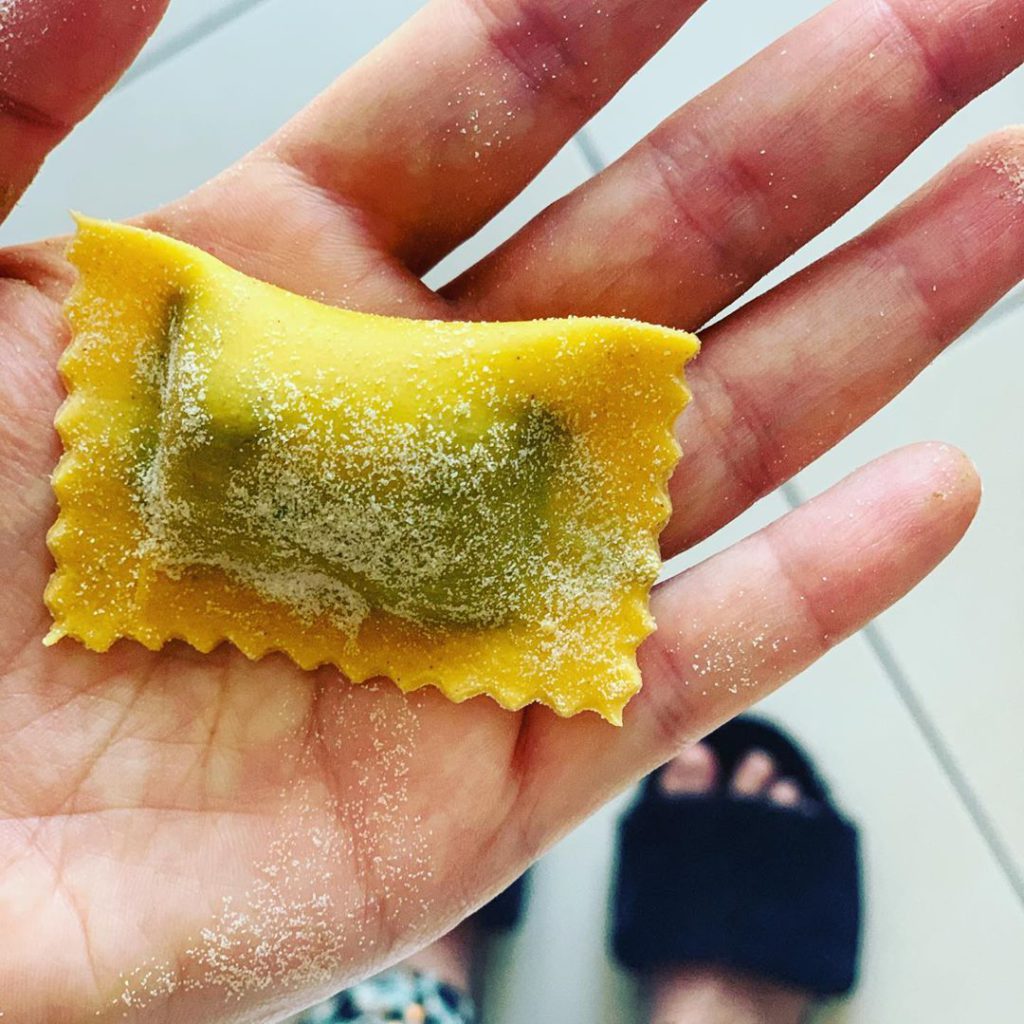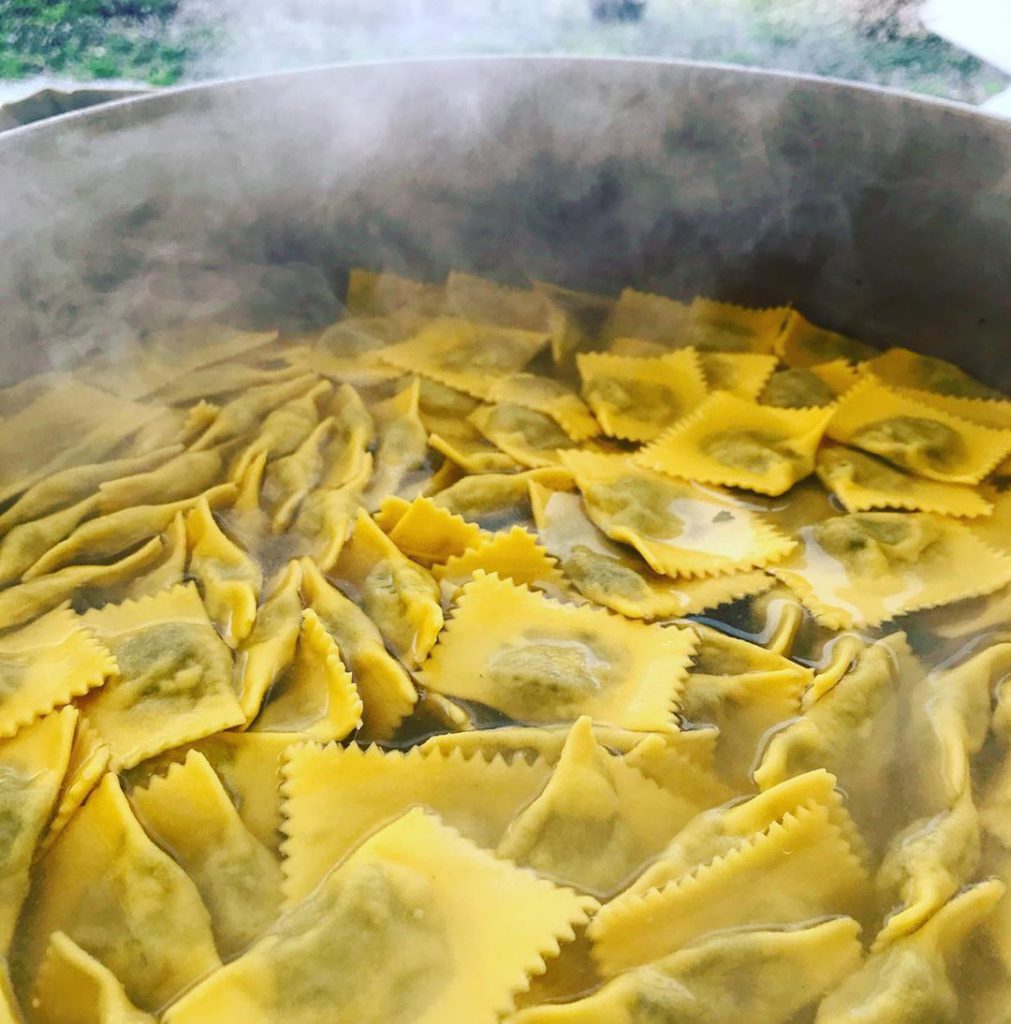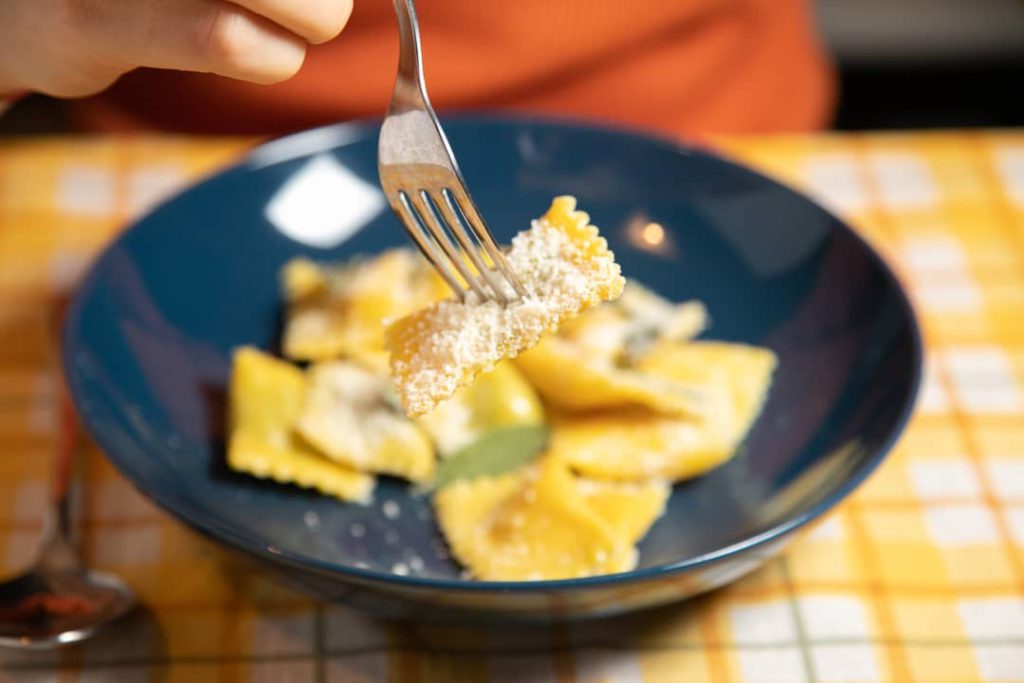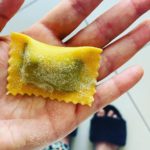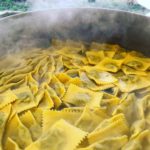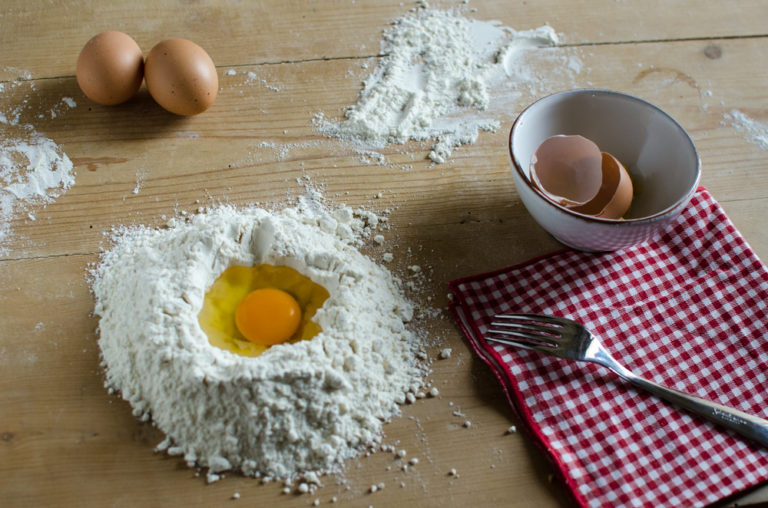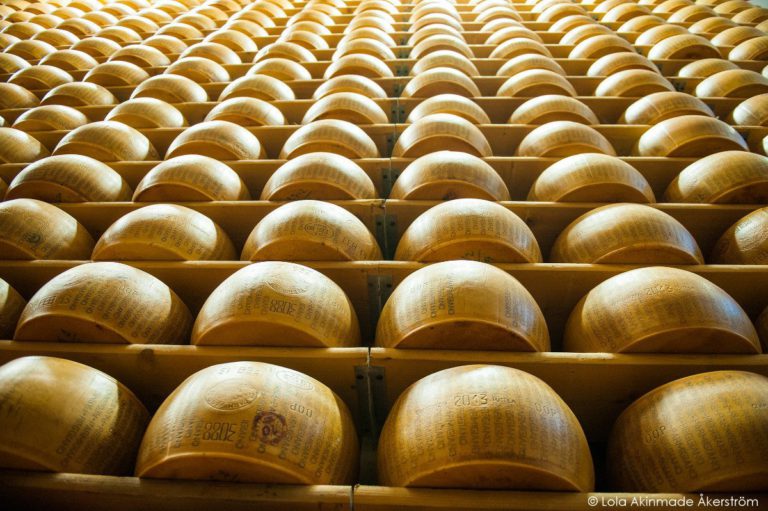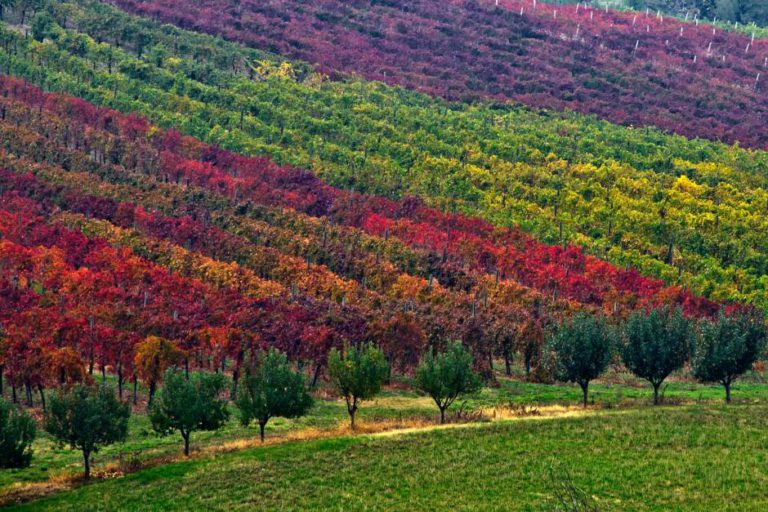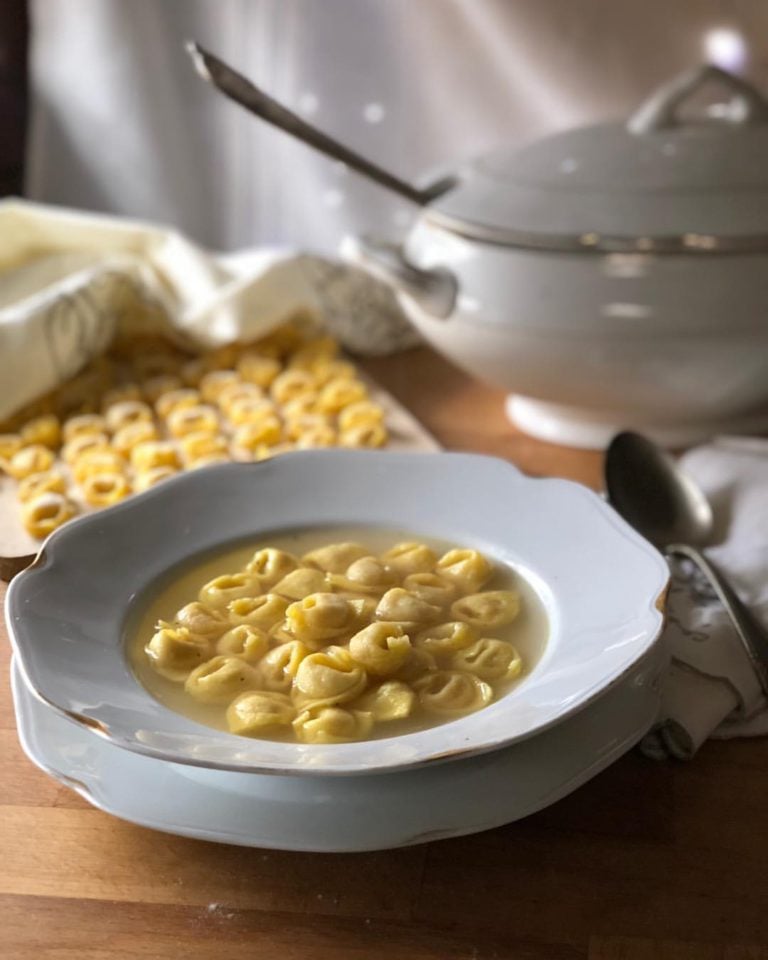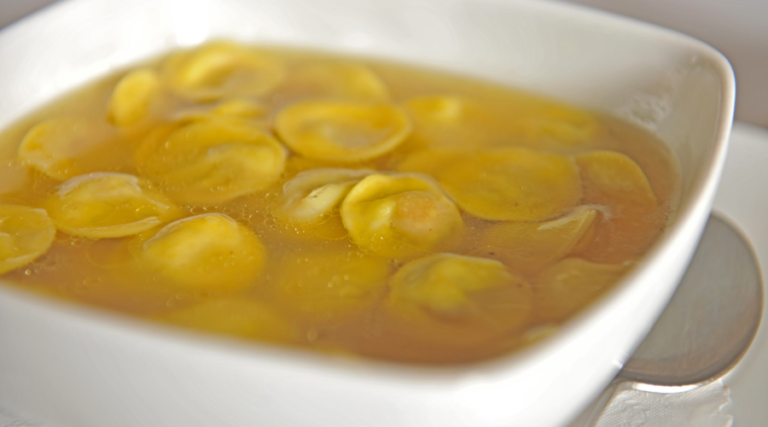As we continue on our Food Valley-themed journey along the Via Emilia (see the related articles below), we cannot but stop in Reggio Emilia to find out more about one of its main attractions. Tortelli verdi (green tortelli), are rightfully part of the ancient culinary tradition of filled pasta in Emilia Romagna together with tortelli con la coda, anolini, tortellini, cappelletti, cappellacci and spoja lorda.
Green tortelli are a typical dish from Emilia, particularly the Reggio Emilia area, and their filling (also known as pesto), as well as their size, varies depending on the area where they are made.
Every family has its own recipe for green tortelli, although there is one common thread: chard, which often appears in Emilian cuisine, and Parmigiano Reggiano, one of our region’s greatest prides.
Let’s have a look at the history and recipe of a simple and genuine dish with an ancient taste.
The history of Reggio Emilia’s green tortelli
The origin of green tortelli can be traced back to at least the late Middle Ages. They presumably originated in peasant kitchens, as the ingredients were easy to find, although they were only prepared for Sunday lunches.
This tasty and nutritious dish – able to satiate peasants returning from the fields – has in time crossed the borders of rustic cuisine, joining the ranks of typical regional dishes. They are traditionally served on the Night of St John, 23 June, and during Christmas Eve dinner.
Stuffed pasta has always been the ideal way to create mouth-watering dishes, thanks to the filling that can vary depending on the leftovers in the pantry. In the Emilian countryside, the ‘rezdore’ – housewives and queens of the hearth – used to stuff the fresh pasta sheet with herbs, an ingredient that was pretty easy to find. In addition to the classic chard and spinach, these included a number of wild herbs such as nettles, borage, catalogna and sometimes even Savoy cabbage.
Thanks to its filling, this dish is therefore rich in flavour and taste even though it is quite light and digestible.
The recipe
Fancy a taste? Then all you have to do is try your hand at it!
Taking the time to roll the dough is always worth it, so put on your apron and follow the traditional recipe for this typical dish from Reggio Emilia.
If you ever get the chance to meet an Emilian nonna, get her recipe. She will give you a priceless heritage!
Ingredients (for 6 people):
Dough:
600 g flour, 6 eggs and salt
Filling:
800 g chard, 800 g spinach,
3-4 tablespoons chopped lard
Garlic
Parsley
300 g Parmesan cheese,
300 g cow’s milk ricotta (or also cow and sheep’s ricotta as used in the Apennines)
Nutmeg
For the seasoning
A knob of butter or meat/mushroom sauce
How to prepare the tortelli
Dough:
Spread the flour on the table, add the eggs and salt in the centre and knead it all together. Leave to rest for half an hour and roll out a thin (but not too thin) sheet with a rolling pin or pasta machine. Take care not to dry out the part you are not using by covering it with a cloth.
Filling:
After boiling the spinach and Swiss chard, drain them, squeeze them out and chop them with the mezzaluna knife. Then put the lard in a large frying pan, add chopped parsley, garlic and finally the chopped vegetables. As soon as the vegetables have cooled, place them in a salad bowl and add the grated Parmigiano Reggiano, ricotta cheese, grated nutmeg and mix them all with your hands.
With the help of a spoon and a knife, place the vegetable filling on the dough and shape the tortelli, squeezing gently. Cut them out with a pastry cutter, take one tortello at a time and pinch the edges well with your fingers so that they do not open during cooking, then sprinkle paper trays with flour and lay the tortelli on them.
Good to know: The tortelli filling can be prepared the day before and stored in a suitable, sealed container or wrapped in cling film.
Cook the tortelli in boiling salted water.
Once the tortelli have been drained, simply pour melted butter over them to enjoy them according to tradition, or dress them with a meat or mushroom sauce as they do in the Apennines.
When you try your hand at making fresh pasta, here’s a useful tip. Every time you make it, it is best to prepare a larger quantity so that it can be stored and used later. Just place it on a floured tray, put it in the freezer for a day and then transfer it to a bag.
This way you will always have some ready-to-use stuffed pasta for a delicious meal that tastes of Emilia Romagna.
Author

Maria Grazia Masotti
An eternal dreamer, but I try to stay grounded. I was raised in the countryside but I love big cities. I’m always ready for a trip, as long as it’s sustainable.
You may also like
The Wines of Emilia
by Walter Manni /// November 14, 2018

Interested in our newsletter?
Every first of the month, an email (in Italian) with selected contents and upcoming events.
History and recipe of the Tortellino, king of Christmas (and beyond)
by Elisa Mazzini /// December 4, 2019
